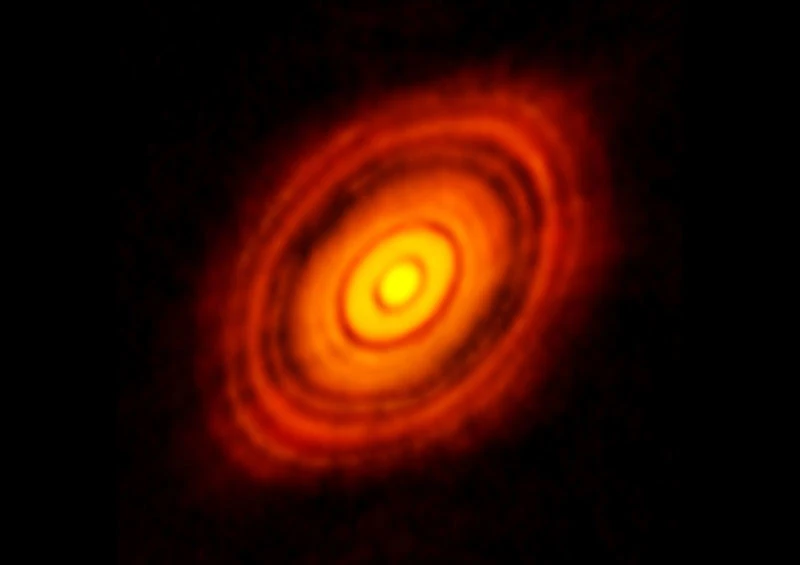
Image: Accretion disk around the nascent star HL Tauri located 450 light years away in the constellation Taurus.
This real image of a proto-stellar and therefore protoplanetary nebula reveals the possible locations of planets in formation (dark areas of the nascent system). All forming objects absorb surrounding matter and undergo cataclysmic bombardment.
Credit: ALMA (ESO/NAOJ/NRAO), NSF.
The main hypotheses about the origin of life on Earth are classified into two categories:
- Early Earth hypotheses suggest that the first life forms appeared on Earth in the environment that existed early in the planet's history, 4.54 billion years ago.
- Panspermia hypotheses suggest that life exists in the universe and was brought to Earth from space by meteorites, comets or interstellar dust.
The origin of life on Earth is a complex question that does not yet have a definitive answer. The most accepted theory is the abiogenesis hypothesis, which proposes that life arose spontaneously on Earth from inorganic matter. This theory is based on the idea that conditions on Earth were favorable for the appearance of life around 4.5 billion years ago.
But there is an alternative to abiogenesis: the panspermia hypothesis.
Panspermia is a theory that suggests that life on Earth, or at least some of its basic elements, may have extraterrestrial origins. This theory is based on the idea that life is widespread in the universe and can move from planet to planet via celestial bodies.
In this scenario, organic molecules essential to life (amino acids) or even microorganisms (bacterial spores), would travel through space aboard celestial objects. Then, during the formation of the star system and the planets, the collisions would release these elements which, later, in a favorable environment would evolve towards a more organized life.
The panspermia hypothesis is not yet proven, but it is supported by several arguments and observations that make it plausible.
- Organic molecules have been discovered in numerous meteorites: Orgueil in France (1864), Murchison in Australia (1969), Allende in Mexico (1969), Tagish Lake in Canada (2000).
Each of these meteorites contained a wide variety of organic molecules, including amino acids, nucleic bases and complex carbon compounds. Additionally, each of these meteorites had its own unique chemical composition, which provides interesting insights into the diversity of organic compounds in the universe.
- Comets are also rich in organic molecules. Analyzes of comets Churyumov-Gerasimenko, Hale-Bopp, Wild 2 and Tempel 1 revealed the presence of organic materials, including amino acids.
Comets are considered 5 billion year old objects of the early solar system. Which means that they could contain vestiges of materials from this distant era, that of the formation of the solar system.
In summary, all of these discoveries reinforce the idea that the organic molecules necessary for life can exist and spread throughout the universe. This potential mechanism for the dispersion of life in the universe would mean that life is not a phenomenon unique to Earth, but is very widespread in the universe.
NB: Certain bacteria have the ability to form optional organelles called bacterial spores. Bacterial spores are life forms that are resistant to environmental conditions when they become very hostile. This allows them to survive for millions of years in the space environment.